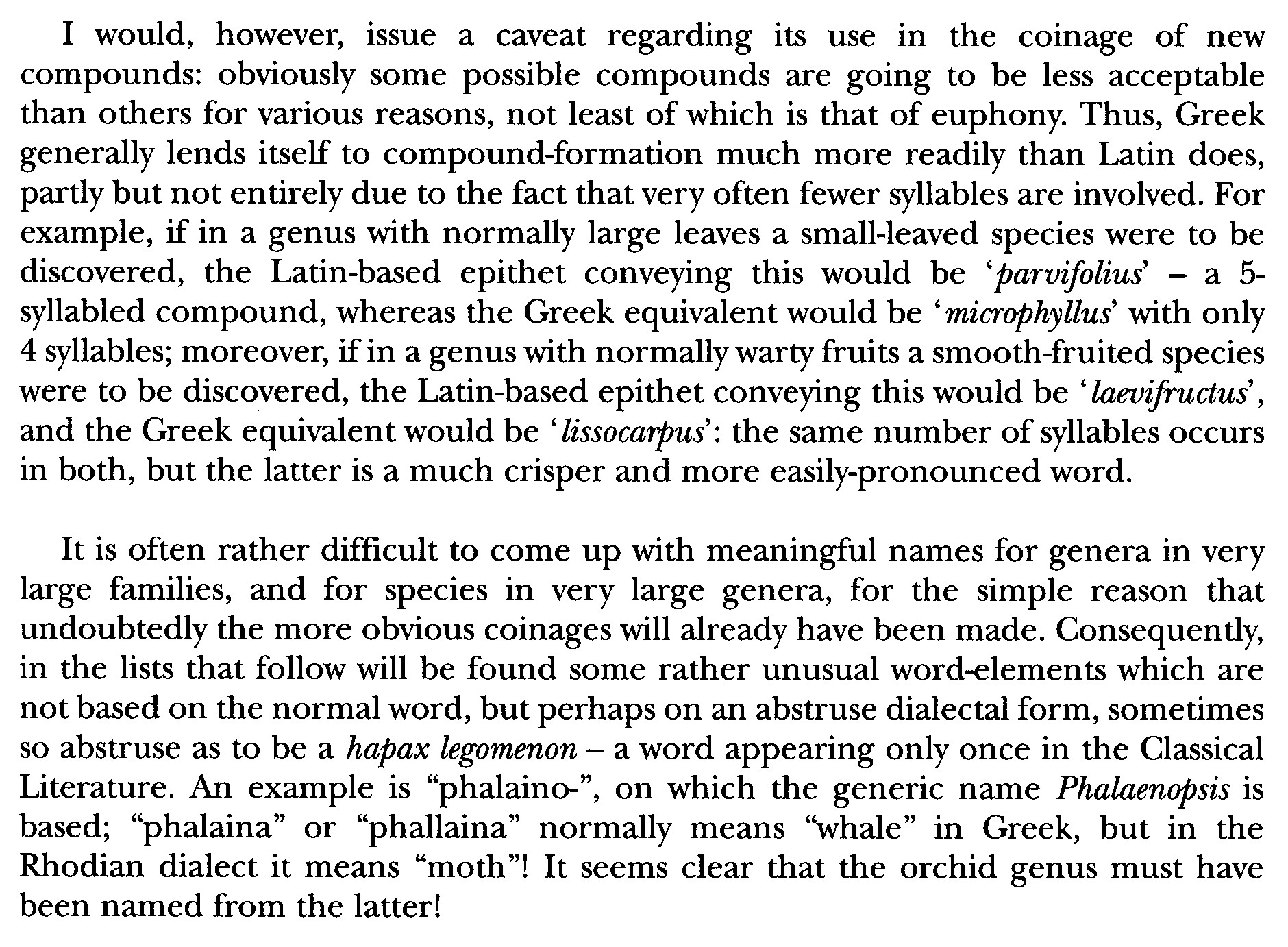Among the facets of the ‘foreign’ in English are the substructure of Latin and Greek in syntax and in vocabularies and lexicons. These three books take very different approaches to the challenge of learning one’s way around the complexities, and each makes a distinctive contribution to the young pedant’s verbal armamentarium.
English Words from Latin and Greek Elements by Donald M. Ayers [1965] (a textbook, with lessons [26 from Latin; 25 from Greek] and assignments to accompany each lesson)
Greek And Latin In Scientific Terminology
by Oscar Edward Nybakken [1959] (more than half the pages are word lists, with the prefixes, suffixes, and numerals that vivify the roots)
Three-Language List of Botanical Name Components by A Radcliffe-Smith [1998] (tables of terms alphabetised by each of the three languages)
Ayers’ approach is paradigmatic and based on “word elements”: the student is to learn bases, learn suffixes, do Assignments for each lesson:
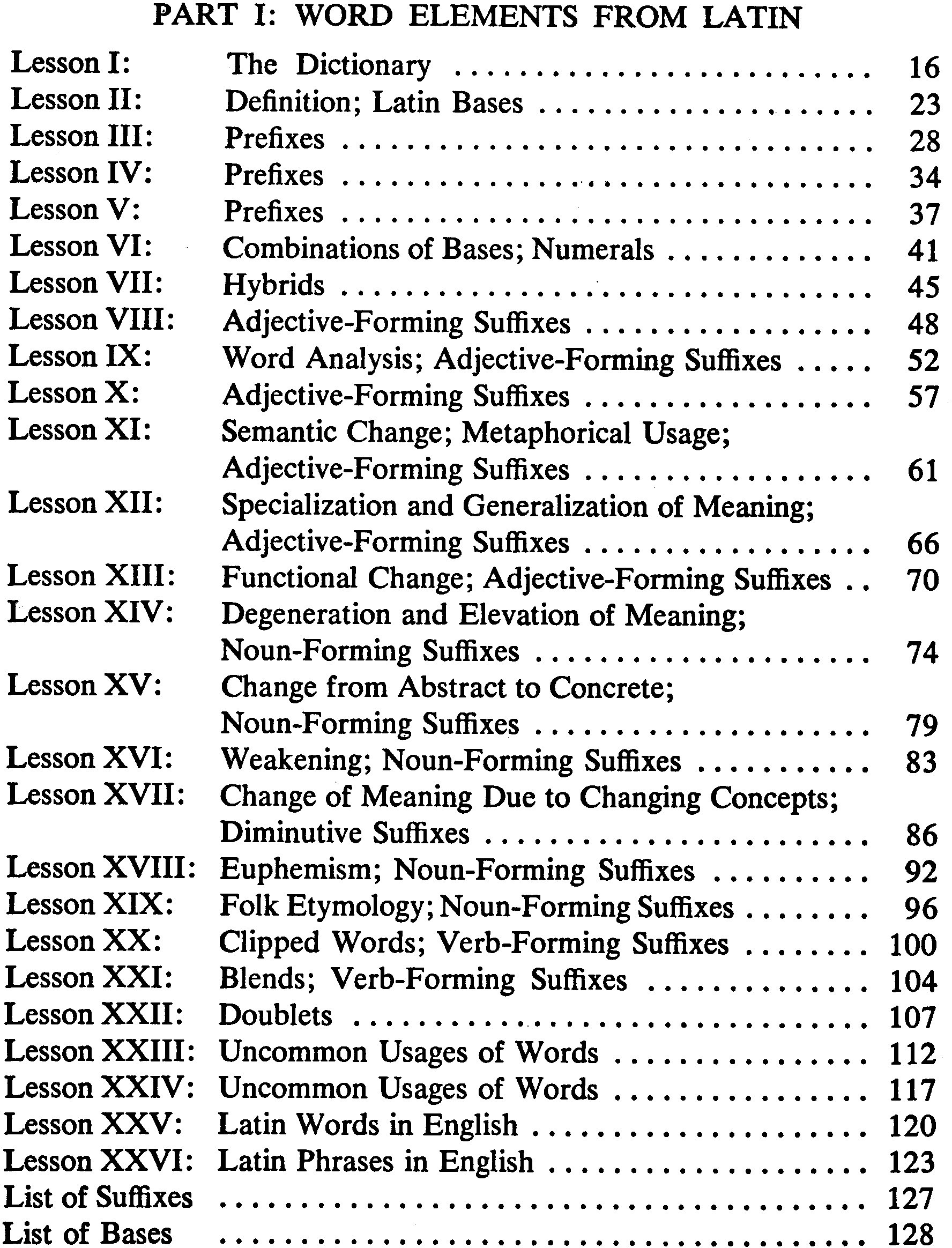



and List of Bases (Greek)

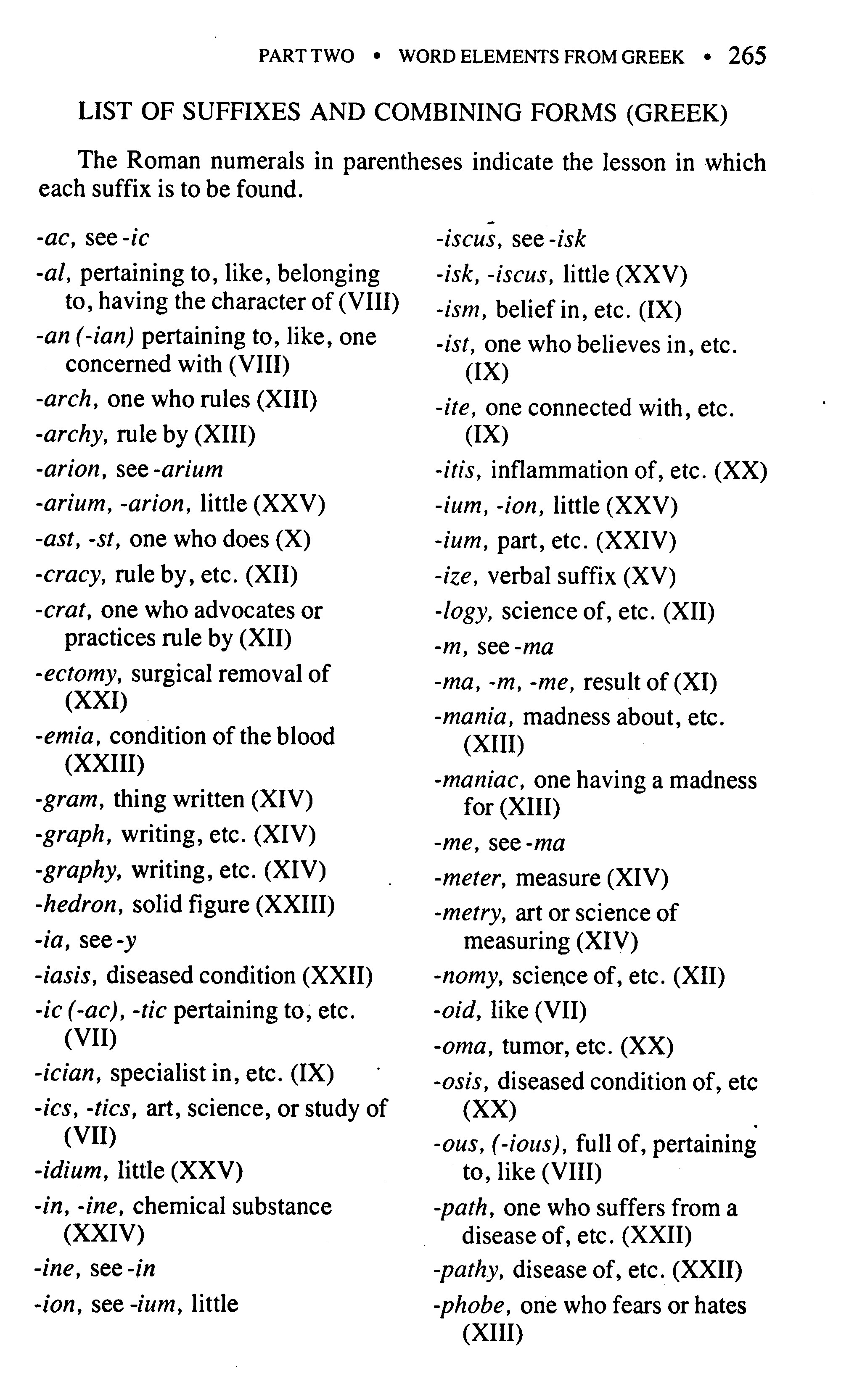
Nybakken’s method is vocabulary-based, and specifically oriented toward science:
Most of the technical words used in medicine and dentistry have their origins in the Greek and Latin languages, and over two-thirds of present-day medical English is derived from Greek alone… The traditional source for names of plants and animals has long been the classical languages. The more technical and highly specialized the terms are, the higher is the percentage of those which have their origins in Greek and Latin, especially in Greek… Word coinages, necessitated by the perennial advances in scientific fields, find their most suitable and frequent origins in the ancient languages of the Greeks and the Romans…
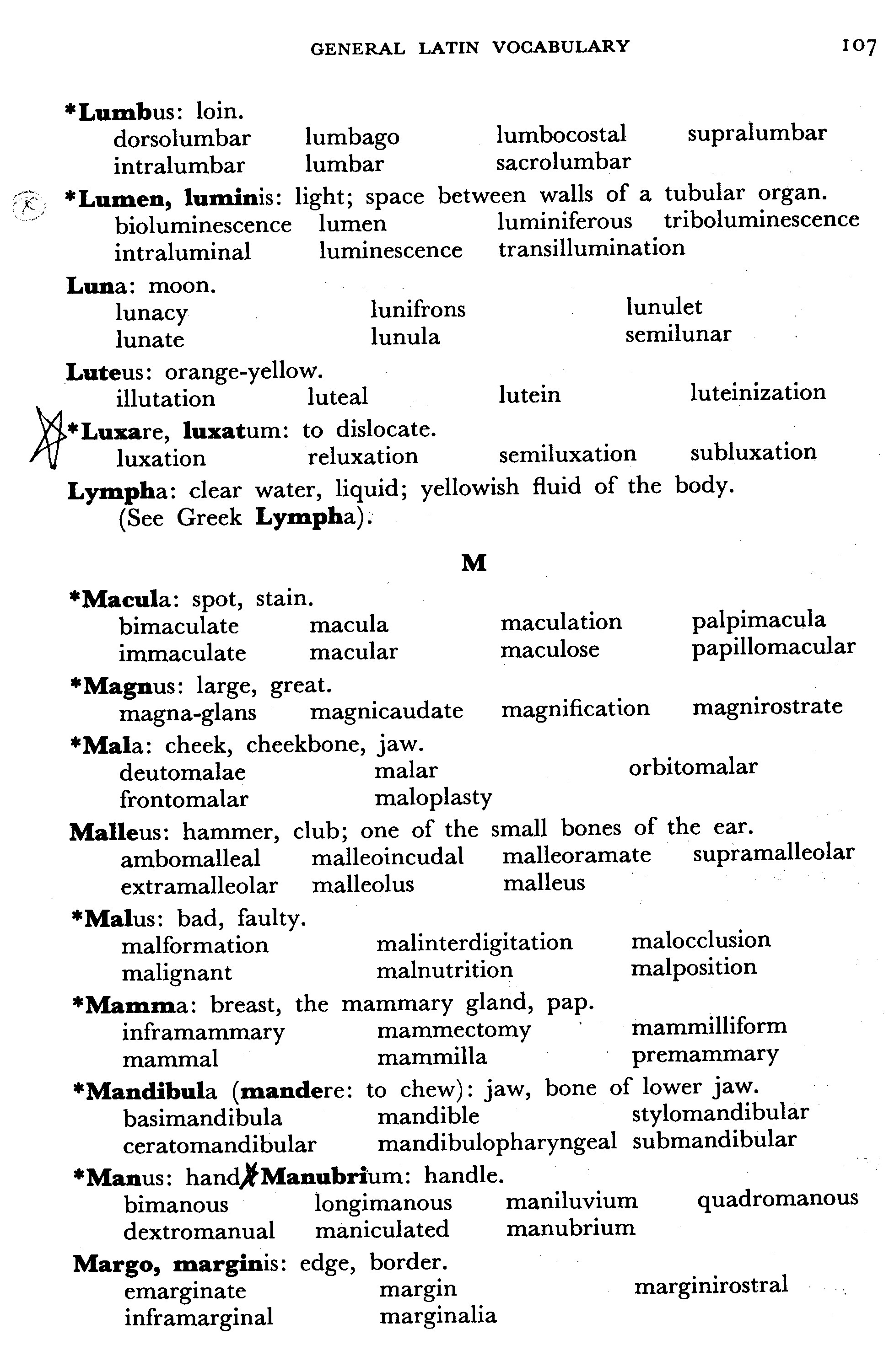
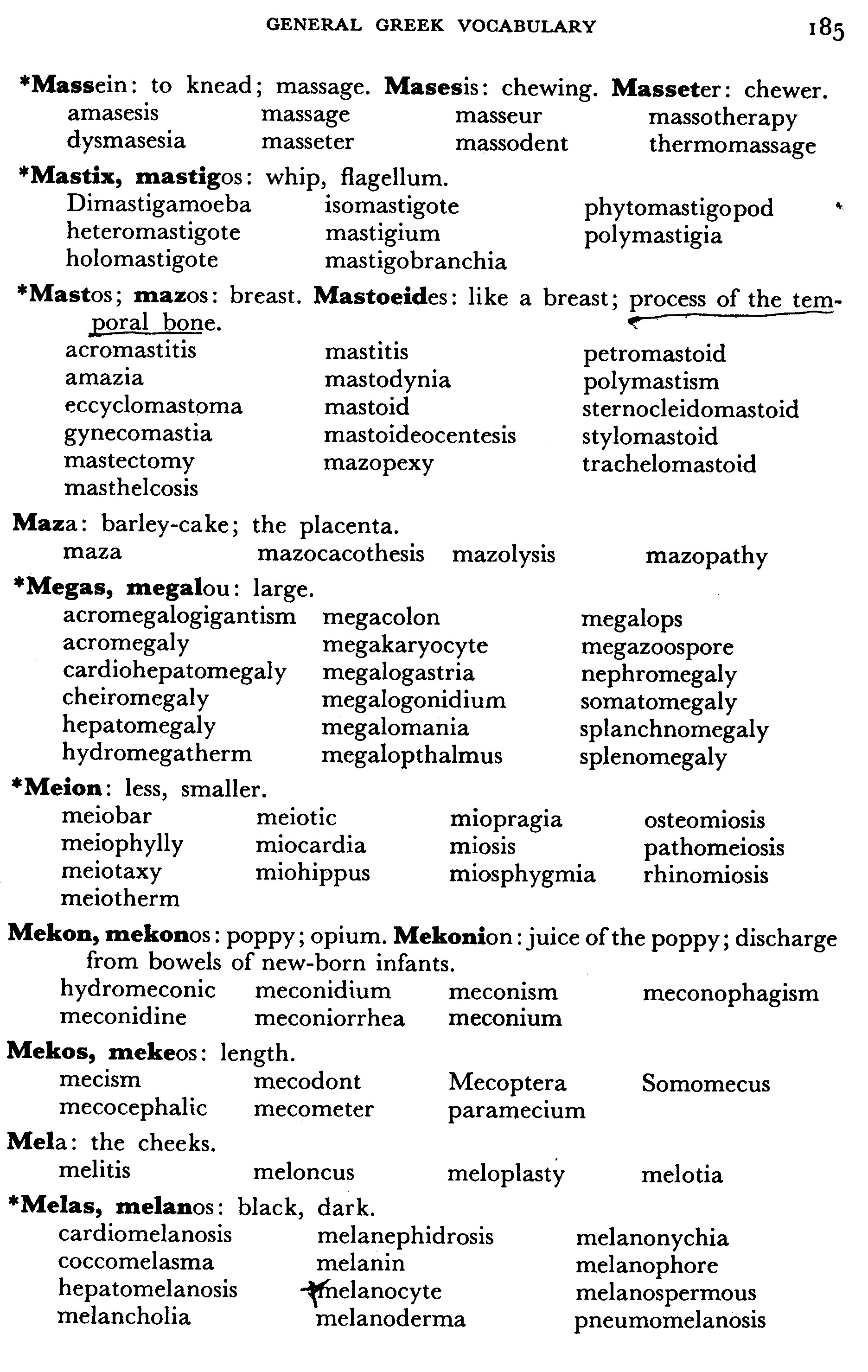
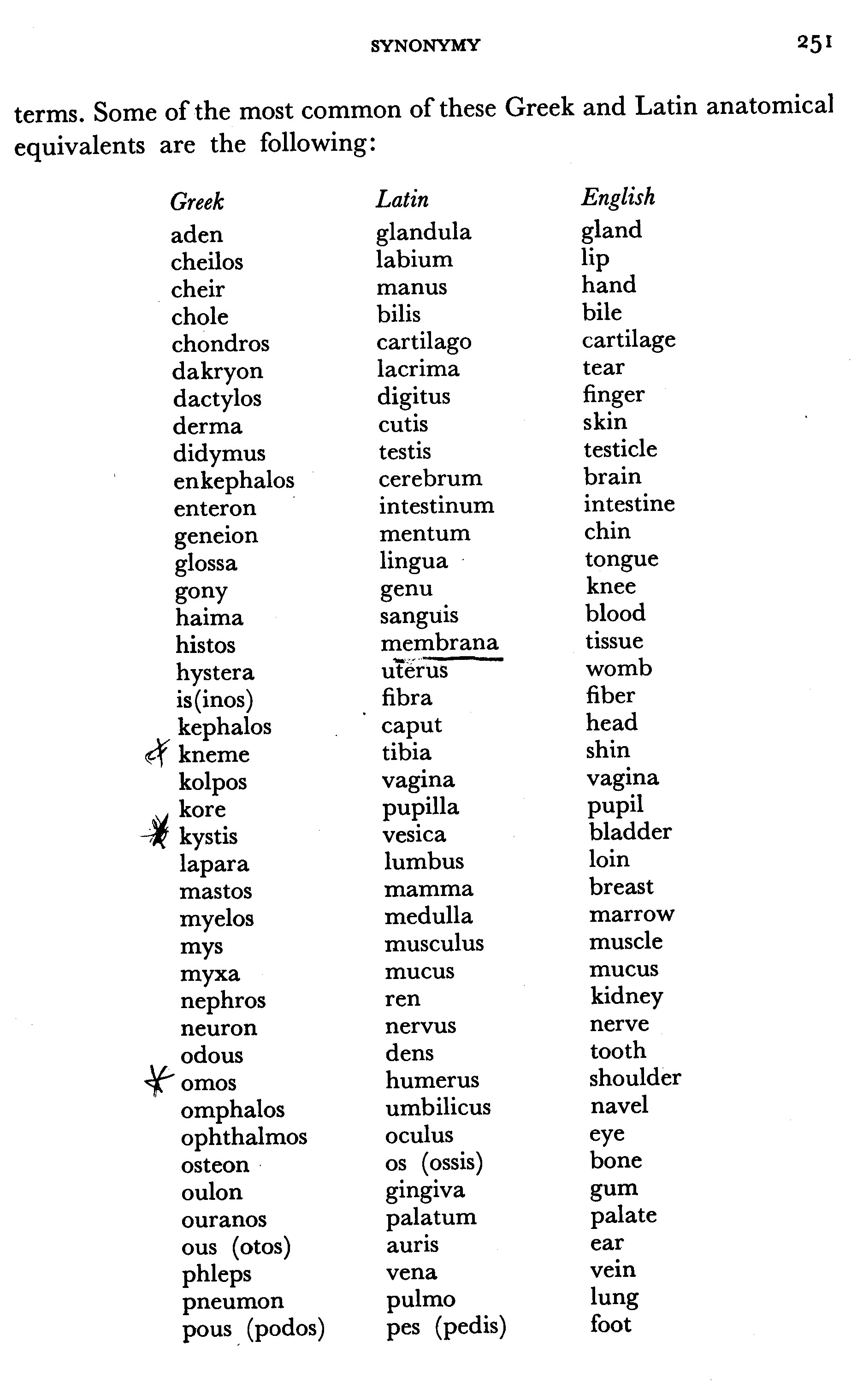
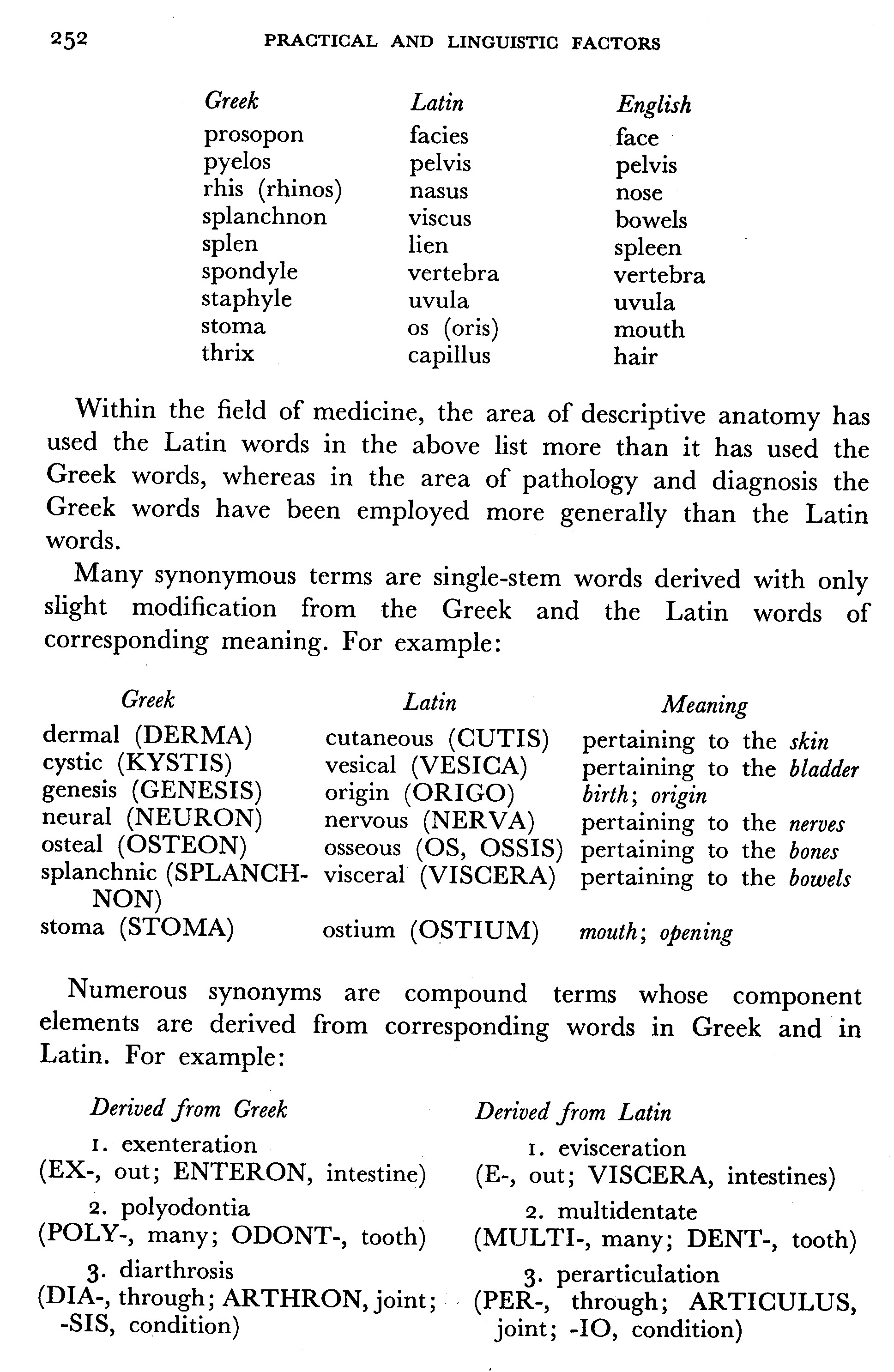
Radcliffe-Smith offers parallel Greek-Latin-English, Latin-English-Greek, and English-Latin-Greek:
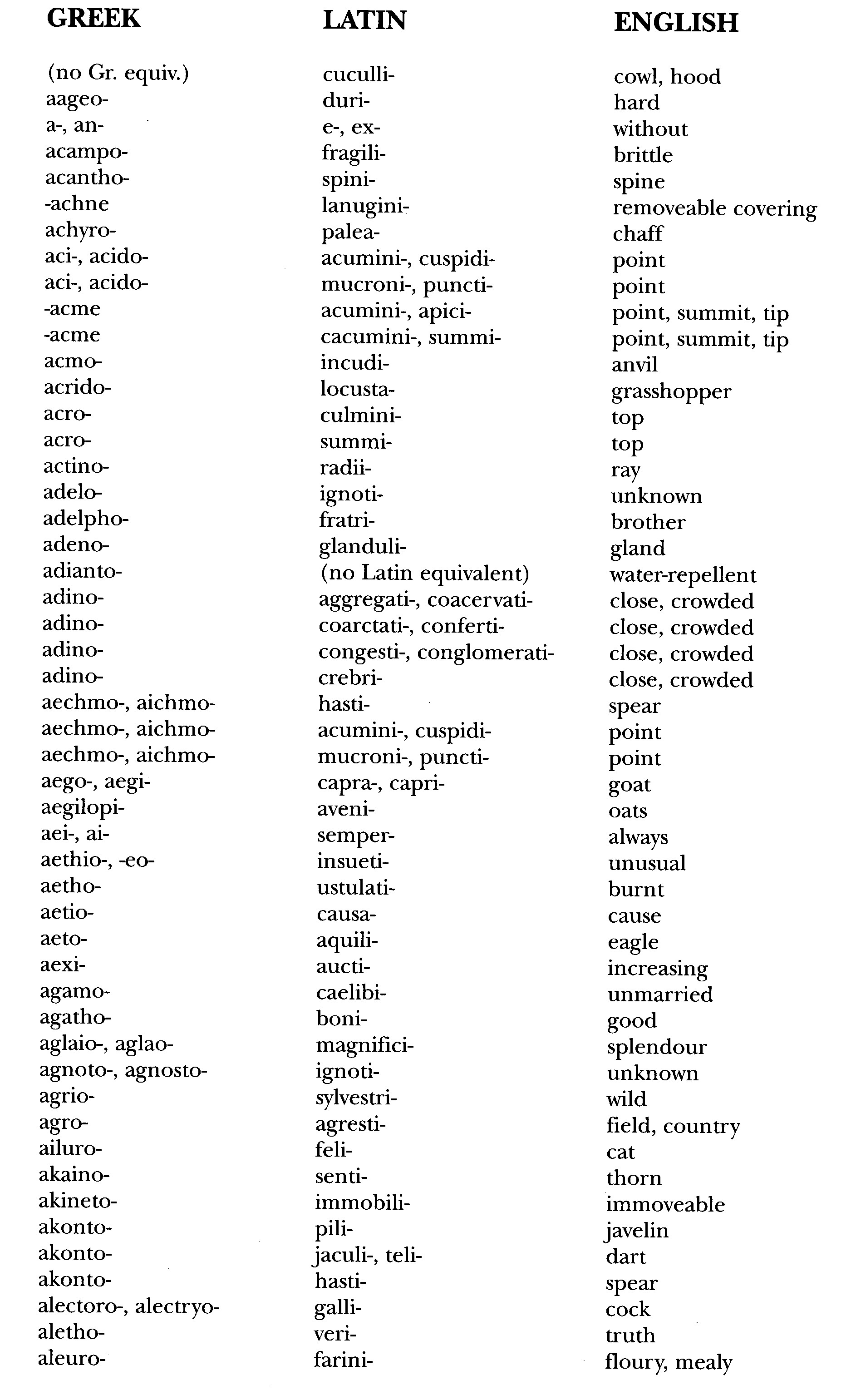
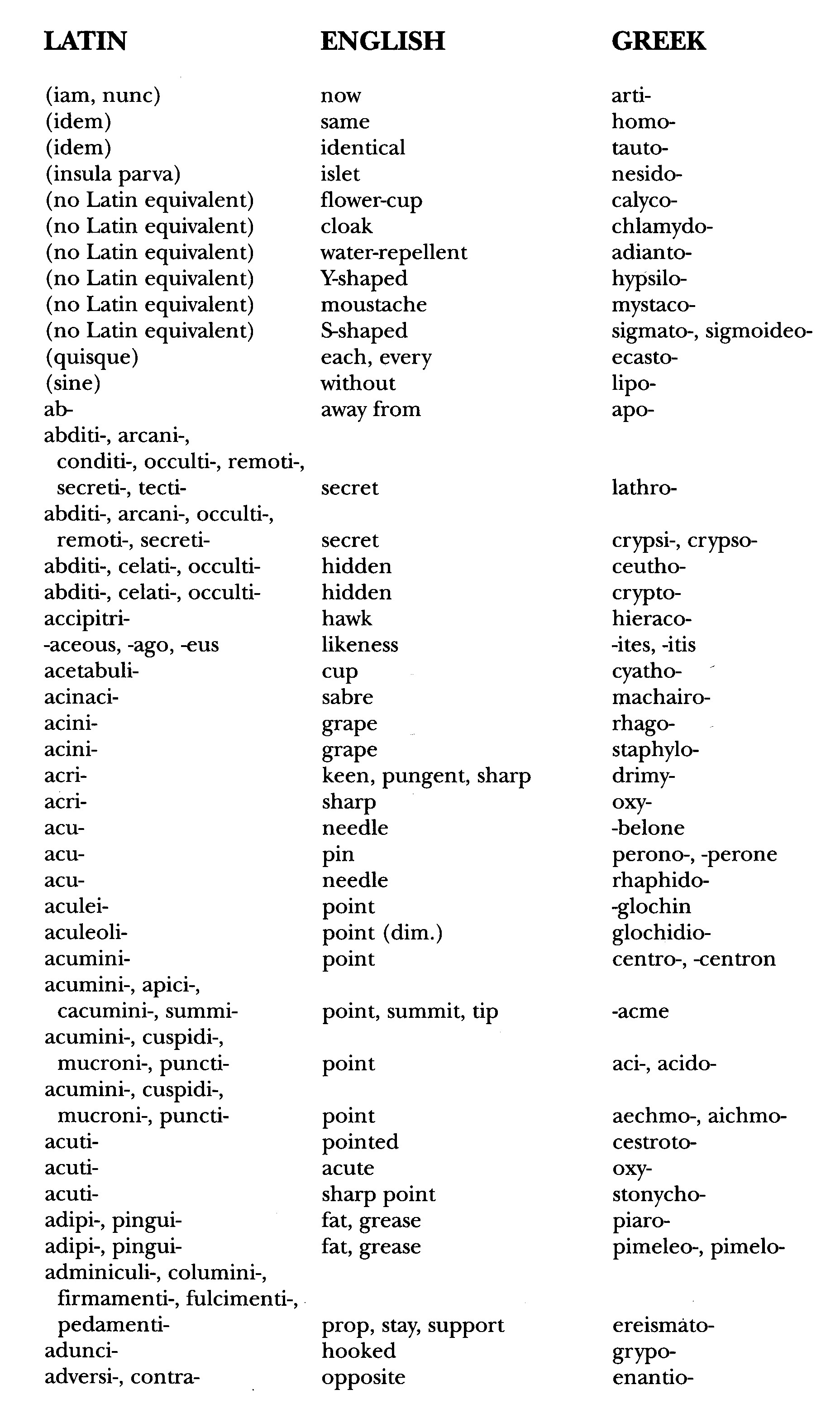

This delicious compendium is published by the Royal Botanic Gardens at Kew, and includes this marvelous bit of British prose:
